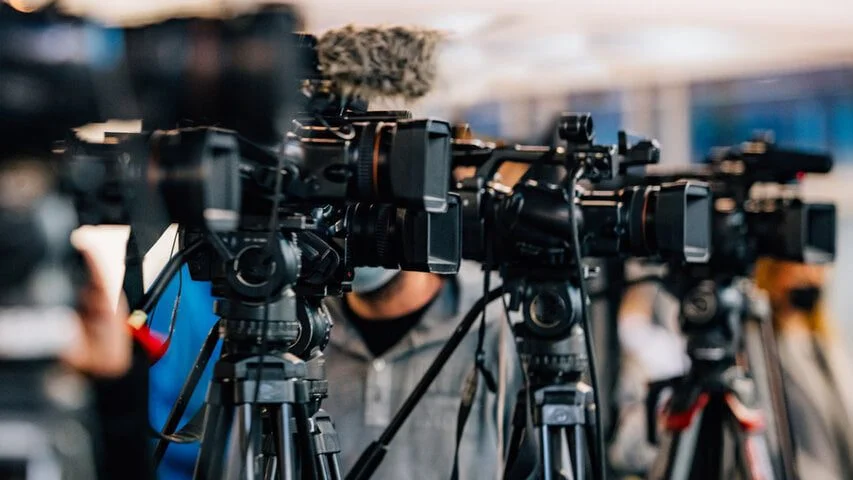Acting auditions are nerve-wracking.
You walk into a room full of strangers. You have five minutes to make an impression. And if you're lucky, they might ask, “Can you try it a different way?”
That’s where improv skills become your secret weapon.
Whether you’re prepping for theatre, TV, commercials, or student films, improvisation builds the confidence, creativity, and presence that help you stand out.
The good news? You don’t need a stage or a troupe to practice. Just a little space, focus, and these 5 powerful drills.
Let’s dive in.
🔥 Why Improv Is a Must for Actors
Improvisation teaches you to:
Think fast
Stay in the moment
React truthfully
Let go of perfection
Bring spontaneity into scripted scenes
In auditions, that means you won’t freeze when the director says:
“Let’s do a looser version”
or
“Give me something more real.”
You’ll be ready—because you’ve trained your actor’s reflexes.
🎯 Drill 1: “Yes, And…”
Goal: Build flow, creativity, and collaboration
This is the golden rule of improv—and one of the best ways to warm up your brain.
How to play:
Partner up (or use an imaginary scene partner if solo).
One person starts a sentence with an idea:
“Let’s build a spaceship out of cardboard.”
The next person responds with:
“Yes, and we’ll fly it to the moon to rescue the cheese aliens.”
Keep it going for 2–3 minutes.
Why it works:
It forces you to agree, adapt, and expand creatively.
It trains your mind to respond instead of overthinking.
It gets you out of your head and into the scene.
💡 Solo twist: Use a mirror or voice recorder and respond to your own prompts.
🧠 Drill 2: “What’s in the Box?”
Goal: Activate imagination and physicality
This one’s fun, fast, and great before auditions.
How to play:
Pretend to open a box in front of you.
Pull out an imaginary object.
React honestly to what it is, without saying what it is.
Use your body, face, and voice to show surprise, curiosity, fear, etc.
After 10 seconds, say what the object is, but based on your reaction.
Example: You recoil and say, “It’s… a live scorpion wearing a bowtie?!”
Why it works:
Encourages commitment to imaginary circumstances
Loosens you up physically and emotionally
Improves mime and object work—skills that casting directors notice
🎭 Drill 3: One Word at a Time Story
Goal: Practice timing, listening, and teamwork
Great for groups, this one builds trust and response speed.
How to play:
Two or more people tell a story, one word at a time.
Go around in a circle, each person adding a single word.
Try to build a beginning, middle, and end.
“Yesterday… I… accidentally… adopted… a… talking… octopus…”
Why it works:
Trains active listening and quick thinking
Builds ensemble awareness—crucial in auditions and callbacks
Forces you to be present and support your scene partners
💡 Solo version: Record yourself speaking one word at a time and play it back. It feels odd, but it works!
🔄 Drill 4: Character Switch
Goal: Build flexibility, emotional range, and bold choices
How to play:
Pick a simple scene or monologue.
Perform it as yourself first.
Then repeat it as:
An old person
A child
A robot
Someone furious
Someone whispering a secret
You can get creative with characters and switch mid-scene.
Bonus round: Perform the scene switching every 5 seconds.
Why it works:
Helps you break habits and find new rhythms
Prepares you for sudden direction changes in auditions
Gets you comfortable making strong, fast character choices
🕹️ Drill 5: Emotional Ping Pong
Goal: Tap into emotional truth and vulnerability
How to play:
With a partner (or in front of a mirror), say the word “I” back and forth.
Each time, deliver it with a different emotion:
Joy
Sadness
Anger
Confusion
Love
Panic
Boredom
Awe
Focus on making each delivery truthful, not exaggerated.
Why it works:
Deepens emotional access
Builds control over subtle shifts
Helps you “drop into” a feeling fast—essential for cold reads or intense scenes
💡 Advanced version: Do this with a real line from your audition script.
💬 Quick Audition Mindset Tips
To get the most from these drills, pair them with these mindset shifts:
🎯 1. Your job isn’t to get the role. It’s to be real.
Be present. Be honest. Be you in that moment.
🛠️ 2. Improv trains bravery, not perfection.
The goal is to explore, not impress.
🧘 3. Warm up before every audition—even 5 minutes helps.
Get your body moving and your imagination active.
🎬 Final Thoughts: Build Confidence Through Play
The secret to acing auditions?
Not just memorising lines.
Not just looking the part.
But walking in with presence, flexibility, and confidence.
These improv drills train your mind, body, and instincts—so when the pressure hits, you're ready.
So next time your nerves kick in, remember:
You’ve practiced spontaneity.
You’ve built muscle memory.
You can trust yourself.
Now go walk into that audition room—and play like you mean it.
Break a leg.













Recent Comments
No comments yet.